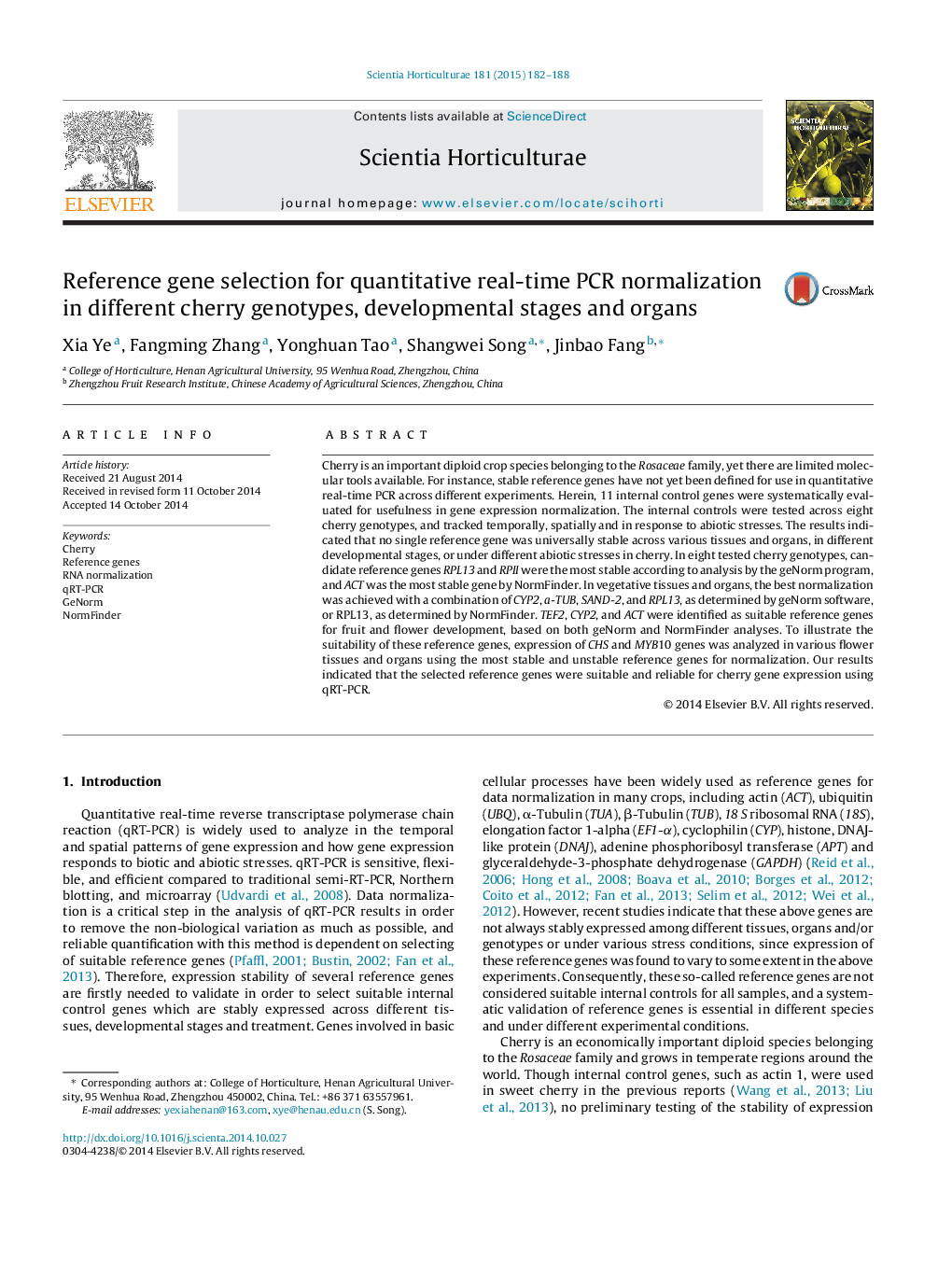| کد مقاله | کد نشریه | سال انتشار | مقاله انگلیسی | نسخه تمام متن |
|---|---|---|---|---|
| 6407108 | 1628817 | 2015 | 7 صفحه PDF | دانلود رایگان |

- No single reference gene was universal across various tissues and organs in different developmental stages.
- In eight tested cherry genotypes, candidate genes RPL13 and RPII were the most stable by the geNorm software, and ACT was the most stable by NormFinder.
- In vegetative tissues and organs, combination of CYP2, a-TUB, SAND-2, and RPL13 was the best stable genes by geNorm software.
Cherry is an important diploid crop species belonging to the Rosaceae family, yet there are limited molecular tools available. For instance, stable reference genes have not yet been defined for use in quantitative real-time PCR across different experiments. Herein, 11 internal control genes were systematically evaluated for usefulness in gene expression normalization. The internal controls were tested across eight cherry genotypes, and tracked temporally, spatially and in response to abiotic stresses. The results indicated that no single reference gene was universally stable across various tissues and organs, in different developmental stages, or under different abiotic stresses in cherry. In eight tested cherry genotypes, candidate reference genes RPL13 and RPII were the most stable according to analysis by the geNorm program, and ACT was the most stable gene by NormFinder. In vegetative tissues and organs, the best normalization was achieved with a combination of CYP2, a-TUB, SAND-2, and RPL13, as determined by geNorm software, or RPL13, as determined by NormFinder. TEF2, CYP2, and ACT were identified as suitable reference genes for fruit and flower development, based on both geNorm and NormFinder analyses. To illustrate the suitability of these reference genes, expression of CHS and MYB10 genes was analyzed in various flower tissues and organs using the most stable and unstable reference genes for normalization. Our results indicated that the selected reference genes were suitable and reliable for cherry gene expression using qRT-PCR.
Journal: Scientia Horticulturae - Volume 181, 2 January 2015, Pages 182-188